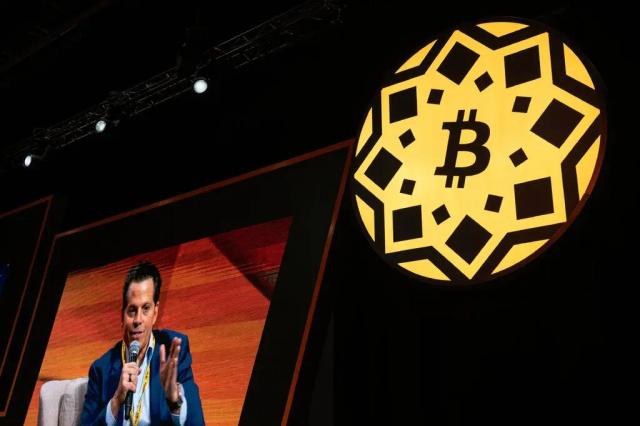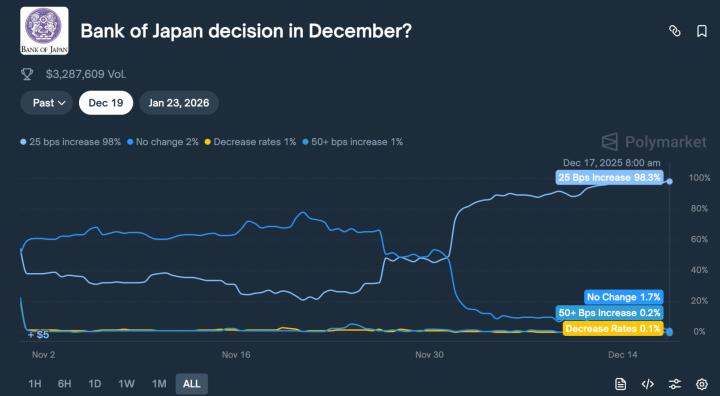
Written By: Figo
In the realm of innovation and human collaboration, we’re witnessing something extraordinary. While the world remains fixated on traditional tech hubs, a new model is emerging that could fundamentally reshape how we build the future together. Pop-up cities — temporary but intentional communities — are proving that innovation isn’t bound by geography, but catalyzed by the right environment and the right people coming together at the right time.
Beyond Traditional Models: The Next Evolution
The journey to pop-up cities begins with understanding how they transcend existing models of innovation. As Vitalik explains in “Why I Built Zuzalu”,
“We already have hacker houses, and hacker houses can last for months or even years, but they usually only fit around ten or twenty people. We already have conferences, and conferences fit thousands of people, but each conference only lasts a week. That is enough time to have serendipitous meetings, but not enough to have connections with true depth.”
Pop-up cities represent a leap forward — “taking one step in both directions” by creating spaces that house hundreds of people for months at a time. This isn’t just a scaled-up hacker house or an extended conference. Vitalik describes this approach as hitting a “sweet spot” — ambitious and distinct enough to offer new insights beyond what has already been repeated extensively, yet light enough to remain logistically manageable.
Having spent the last few years deeply embedded in the crypto ecosystem, I’ve experienced firsthand the unique challenges and opportunities of our industry’s remote-first culture. As a VC, I’ve watched countless teams build revolutionary technology while scattered across different time zones and continents. This distributed approach brings unprecedented freedom, but it also comes with a hidden cost that became increasingly apparent to me: the missing magic of real human connection.
I remember my first crypto conference experience vividly. After months of Zoom calls and Telegram chats, suddenly being surrounded by hundreds of familiar usernames transformed into real faces was electric. These weren’t just conference attendees — they were the developers whose code I’d reviewed, the founders whose projects I’d invested in, the thought leaders whose threads I’d followed. In those hallway conversations and impromptu whiteboarding sessions, ideas that had been percolating in isolated digital spaces suddenly gained new dimension through the energy of in-person collaboration.
The Network State Vision
The theoretical foundation for these communities comes from Balaji Srinivasan’s revolutionary concept of the Network State — a vision where digital communities unified by shared values can materialize into physical spaces. It suggests something profound: that the future of human organization might not be bound by arbitrary geographical borders, but instead shaped by shared purpose and vision.

What makes the crypto community the ideal pioneer for this new model? Unlike traditional tech industries that gravitate toward singular hubs, crypto has always embodied a different spirit. Ethereum’s development teams span continents, from Switzerland to Singapore, Berlin to Romania. This natural resistance to centralization, combined with years of experience in global coordination, created the perfect foundation for something new.
Zuzalu: From Theory to Reality
In early 2023, this vision materialized in Montenegro under a playful name that carried no specific meaning: Zuzalu. For two months, Lustica Bay became home to 200 residents — a carefully curated mix of Ethereum developers, longevity researchers, and governance experts. It wasn’t just a gathering; it was a living laboratory where new ideas could be tested, refined, and implemented in real-time.

The impact was immediate and tangible. Take Zupass, for instance — an identity system that began as a basic prototype by the 0xPARC team. Through constant interaction with users and rapid iteration cycles, what might have taken months to develop in a traditional setting evolved within weeks into a practical tool now used across multiple popup communities.
The Open Frontier
Rather than creating a centralized “Zuzalu 2.0,” the movement evolved in a characteristically crypto-native way: it decentralized. In December 2023, Vitalik proposed “reopening the frontier,” supported by two Gitcoin funding rounds totaling 500 ETH. The vision was clear: remove any central authority and empower anyone aligned with the mission to create their own “Zu-villages.”

This new approach explicitly moved away from having:
- A primary headline long-duration event
- An explicit concept of “Zuzalu citizens” or “Zuzalu residents”
- The name “Zuzalu” attached to specific physical events
Instead, it actively encouraged both existing community members and newcomers to run their own pop-up cities, even simultaneously and adjacent to each other.
Chiang Mai: A Vision Realized
October 2024 marked a watershed moment when multiple pop-up cities emerged simultaneously in Chiang Mai, Thailand, creating an unprecedented ecosystem of interconnected communities. Most remarkably, many of these initiatives traced their roots back to the original Zuzalu experiment: Edge City Lanna, ShanhaiWoo, The Mu, MEGAZu, HER DAO, Invisible Garden, Lovepunks, Funding the Commons, and several other emerging communities. Each brought their own unique perspective while maintaining the collaborative spirit that made Zuzalu special.


As a VC at IOSG Ventures, which proudly sponsored The Mu, I had the opportunity to witness this vibrant ecosystem firsthand. The Social Layer platform became our shared digital town square, showcasing the incredible range of activities happening across all communities. On any given day, events could range from technical demo days where builders showcased their latest projects, to rock climbing sessions, Muay Thai classes, meditation workshops, to casual field trips exploring Thailand’s cultural sites, to community dinners and social gatherings.
What made this experiment truly special was how strongly each community encouraged cross-pollination. Everyone was welcome everywhere — this wasn’t just allowed but actively celebrated. The weekly Zuzalu Community Town Hall became a cornerstone event where representatives from each pop-up city shared their updates and community members could connect across projects and interests. These moments of convergence demonstrated what’s possible when you remove the traditional constraints of time and space that limit most professional gatherings — ideas flow freely, relationships deepen, and innovation accelerates in ways that simply aren’t possible in traditional settings.
The New Silicon Valley Model
What makes pop-up cities particularly fascinating is how they’re redefining the very nature of innovation hubs. Traditional tech hubs like Silicon Valley succeeded by concentrating talent in one location, but they’ve begun showing clear limitations: astronomical living costs that exclude diverse perspectives, visa restrictions that keep global talent out, and perhaps most damagingly, an increasingly homogeneous culture that can stifle genuine innovation.
Pop-up cities offer something fundamentally different. They create the density of talent and interaction that made Silicon Valley powerful, but reimagined for a global, digital age. In popup cities, developers can experiment with collaboration before committing to formal partnerships, teams can test compatibility through short-term projects, and ideas can be validated by a diverse, global community in real-time.
The contrast between traditional conferences and pop-up cities became strikingly clear during my time at both Devcon and The Mu. While Devcon buzzes with energy and possibilities, its brief duration means many promising connections never fully develop. You might have an amazing conversation about zero-knowledge proofs over coffee, exchange contact information, and promise to follow up — but once everyone returns to their respective time zones, that momentum often fades.
Pop-up cities solve this by providing what I’ve come to think of as “relationship infrastructure” — the sustained time and shared context needed for real collaboration to flourish. They create a middle ground between the brief interactions of conferences and the long-term commitment of traditional tech hubs. This is the missing piece in our industry’s remote-first puzzle: the space for organic, unstructured collaboration that leads to breakthrough innovation.
At IOSG Ventures, we’re backing this vision because we see in popup cities something fundamental about the future of innovation. The success of Chiang Mai’s multiple concurrent communities suggests we’re onto something transformative — a new model that combines the best aspects of Silicon Valley’s innovation density with the global, dynamic nature of the crypto ecosystem.
The Promise Ahead
At a recent panel titled “The Promise of Pop-up Cities” in Chiang Mai, Vitalik painted an intriguing vision of the future: specialized communities emerging to tackle specific challenges, from biotech hubs to self-sufficient infrastructure experiments. This specialization, combined with the global flexibility of popup cities, hints at something profound about their potential.
As I reflect on my journey through various crypto conferences, hacker houses, and now pop-up cities, I’m struck by how this movement represents not just an evolution in how we work, but in how we build community in an increasingly digital world. The crypto industry’s remote-first nature has given us unprecedented freedom, but it’s also shown us the irreplaceable value of human connection. Pop-up cities aren’t just solving for productivity or innovation — they’re addressing a deeper need for belonging and purpose in our globally distributed industry.
Perhaps the future won’t be found in any single Silicon Valley, but in a network of purpose-built communities that can appear wherever and whenever innovation calls. Already, the next iteration is taking shape with ZuThailand in Pattaya during November-December 2024, which we at IOSG Ventures are proud to support. These won’t just be temporary gatherings — they’ll be, as Janine from Edge City described, “society incubators” where we can test and develop new models for education, healthcare, and human flourishing.
Looking ahead, I believe we’re just beginning to scratch the surface of what’s possible. Each new popup city teaches us something valuable about community building, governance, and collaboration. Through these experiments, we’re witnessing the early stages of what could be the most significant transformation in human collaboration since the industrial revolution. The potential is clear: popup cities aren’t just changing where innovation happens — they’re fundamentally reshaping how we build the future together.
References
Buterin, V. (2021). Crypto Cities. vitalik.eth.limo.
https://vitalik.eth.limo/general/2021/10/31/cities.html
Buterin, V. (2022). What do I think about network states?
https://vitalik.eth.limo/general/2022/07/13/networkstates.html
Buterin, V. (2023). Why I Built Zuzalu. Palladium Magazine.
https://www.palladiummag.com/2023/10/06/why-i-built-zuzalu/
Srinivasan, B. (2022). The Network State.
https://thenetworkstate.com/
Zuzalu Community. (2024). Decentralize Zuzalu.
https://zuzalu.gitbook.io/zuzalu-beta-docs/welcome/what-is-zuzalu#id-2024-open-frontier
Zuzalu Catalog. (2024). The Zuzalu Story.
https://telegra.ph/history-10-29-6
The Promise of Pop-up Cities Panel Discussion. (2024). The Mu, Chiang Mai.
https://www.youtube.com/watch?v=LYsVLJfDf6U
Infrastructure Support:
Social Layer. https://app.sola.day

The Rise of Pop-up Cities was originally published in IOSG Ventures on Medium, where people are continuing the conversation by highlighting and responding to this story.








